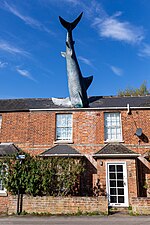Dorset House
Dorset House was a large house in Headington, Oxford, England.This villa, known in its later years as Dorset House, was built in 1878 on the south side of London Road, Oxford. It had several names during its lifetime: 1878–1899: Ellerslie 1899–1920: Hillstow 1920–1961: Hillstow Annexe, Headington School 1961–2004: Dorset House, School of Occupational TherapyCatherine Caughey (1923–2008), who worked on codebreaking at Bletchley Park during World War II, subsequently trained as an occupational therapist at Dorset House.The house was acquired by Quintain property developers in 2006 and demolished in 2009. Quintain sold the site to Berkeley Homes in September 2010 for £5m. The site was developed as student housing for Oxford Brookes University students during 2011–12. and is managed by Unite, still under the name of Dorset House.
Excerpt from the Wikipedia article Dorset House (License: CC BY-SA 3.0, Authors).Dorset House
Latimer Grange, Oxford Headington
Geographical coordinates (GPS) Address Nearby Places Show on map
Geographical coordinates (GPS)
| Latitude | Longitude |
|---|---|
| N 51.758 ° | E -1.216 ° |
Address
Latimer Grange
Latimer Grange
OX3 7PQ Oxford, Headington
England, United Kingdom
Open on Google Maps









